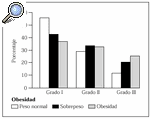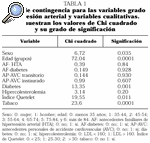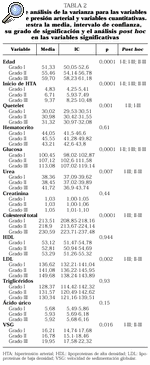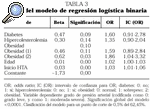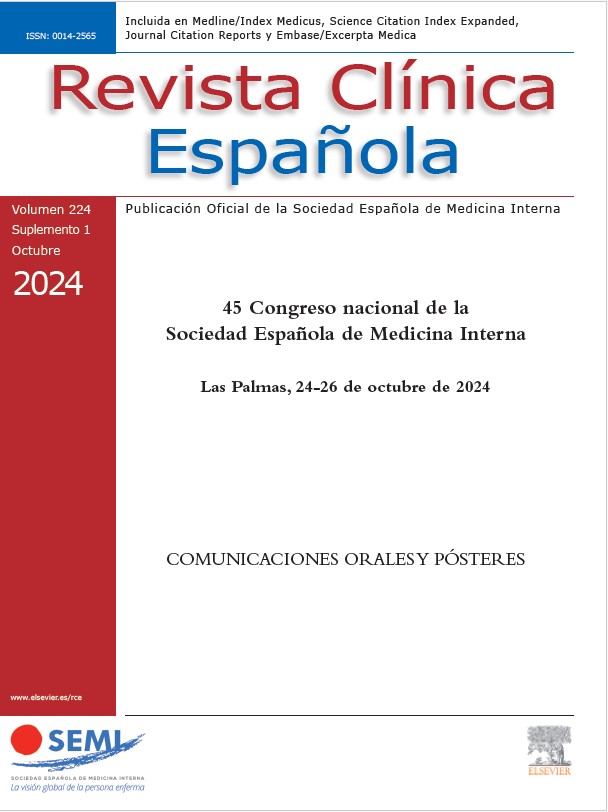Objetivo. Analizar las características clínicas, grado de presión arterial y factores condicionantes del grado de control en los pacientes remitidos por los médicos de Atención Primaria vistos por primera vez en una Unidad especializada en Hipertensión Arterial (HTA). Método. Se incluyeron de forma consecutiva 1.317 pacientes enviados por primera vez a la consulta de HTA por su médico de Atención Primaria entre enero de 1997 y noviembre de 2000. Se aplicó el siguiente protocolo inicial de estudio: anamnesis y exploración física, analítica de sangre y orina, radiografías de tórax y abdomen, fondo de ojo y electrocardiograma. En función de la orientación clínica inicial y de los resultados de las pruebas complementarias descritas, el estudio se completó o no con otros estudios complementarios. Los datos obtenidos se registraron en una base de datos informática y posteriormente se analizaron en el programa estadístico SPSS 9.0. Resultados. De los 1.317 pacientes, 741 (56,3%) fueron mujeres. La edad media fue de 54,58 ± 14,4 años (rango: 14-91 años). La presión arterial sistólica (PAS) y la presión arterial diastólica (PAD) medias fueron de 152,6 ± 22,7 mmHg y 94,2 ± 11,6 mmHg, respectivamente. El 71,6% (943 pacientes) presentaron al menos dos factores de riesgo cardiovascular (FRCV), tres FRCV el 50,5% (665 pacientes) y cuatro FRCV el 10,4% (137 pacientes). El 43,6% (575 pacientes) presentaba un grado I de HTA, el 33,2% (438 pacientes) un grado II y el 23,1% (304 pacientes) un grado III de HTA. El grado de HTA se asoció con la edad, el tiempo transcurrido desde el inicio de la HTA, el índice de masa corporal (IMC) y los niveles en sangre de glucosa, colesterol total y colesterol LDL. Un modelo de regresión logística para clasificar a los pacientes como grados I o II-III identificó como variables independientes la edad, el tiempo transcurrido desde el inicio de HTA, el IMC, el padecimiento de diabetes mellitus (DM) y un nivel plasmático de colesterol LDL mayor de 160 mg/dl. Conclusiones. La mitad de los pacientes enviados por primera vez por su médico de Atención Primaria a nuestra Unidad de HTA presentaba al menos tres FRCV. Asimismo, el 56,4% presentaba una HTA moderada-severa (grados II-III). Por último, el grado de HTA de los pacientes dependía de la edad, del tiempo transcurrido desde el inicio de la HTA, del índice de Quetelet y de la existencia de DM e hipercolesterolemia.
Palabras clave:
hipertensión arterial, grado de presión arterial, Unidad Especializada en hipertensión arterial
Objective. To analyze the clinical manifestations, blood pressure level, and determinants of the degree of hypertension (HT) control in the patients referred by the Primary Care physicians and evaluated for the first time in a Hypertension Clinic. Method. The participants were 1,317 consecutively referred patients for the first time to the Hypertension Clinic by their Primary Care physician, between January 1997 and November 2000. The following initial study protocol was applied: case history and physical exploration, blood and urine biochemistry, chest and abdomen x-rays, fundus oculi and electrocardiogram. According to the initial clinical orientation and the results of the complementary tests described, the study was supplemented or not with other complementary studies. Results were registered in a computer dabatase and subsequently were analyzed with the statistical program SPSS 9.0. Results. 741 (56.3%) of the 1,317 patients were women. The average age was 54.58 ± 14.4 years (range: 14-91 years). Average systolic blood pressure (SBP) and diastolic blood pressure (DBP) were 152.6 ± 22.7 mmHg and 94.2 ± 11.6 mmHg, respectively. 71.6% (943 patients) presented at least two cardiovascular risk factors (CVRF), 50.5% (665 patients) three CVRF and 10.4% (137 patients) four CVRF. 43.6% (575 patients) presented a degree I, 33.2% (438 patients) a degree II and 23.1% (304 patients) a degree III HT. The degree of HT was associated with the age, the time elapsed from the beginning of the HT, the body mass index (BMI) and the levels of blood glucose, total cholesterol and LDL cholesterol. A model of logistic regression to classify the patients as HT degrees I or II-III identified as independent variables the age, the time elapsed from the beginning of HTA, the BMI, the presence of diabetes mellitus (DM) and the plasma LDL cholesterol level greater of 160 mg/dl. Conclusions. Half of the patients sent for the first time by its Primary Care physician to our Hypertension Clinic presented at least three CVRF. Furthermore, 56.4% presented a moderate-severe HTA (degrees II-III). Finally, the degree of HTA of the patients was related to the age, the time elapsed from the beginning of the HTA, the Quetelet's index, and the existence of DM and hypercholesterolemia (HC).
Keywords:
hypertension, degree of hypertension, Hypertension Clinic






